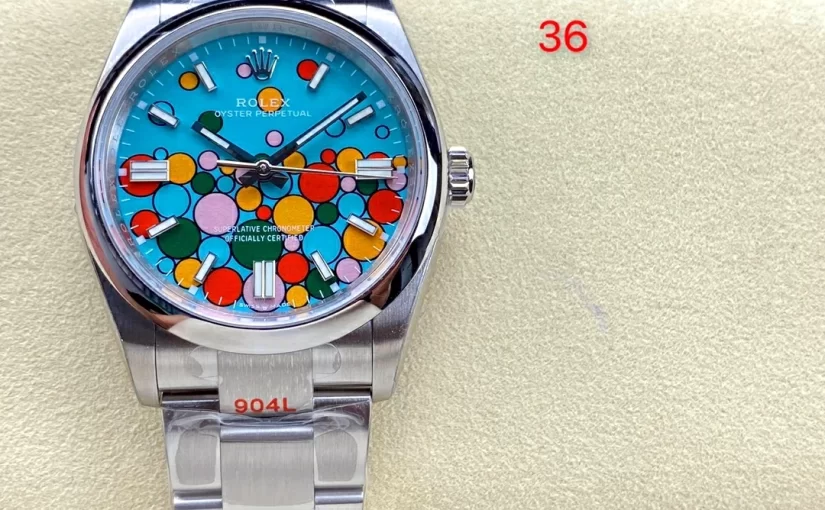The Rolex Explorer II, a watch born from the spirit of exploration, has evolved significantly since its introduction in 1971. Designed as a rugged tool watch, it has maintained its core identity while adapting to the needs of adventurers, from mountaineers to spelunkers, and even collectors. This article traces the history of the Explorer II, detailing its design changes, technical advancements, and the nuances that make it one of Rolex’s most revered models.
Origins of the Explorer II: A Watch for the Dark
The story of the Explorer II begins with the original Explorer, released in 1953 as a tool watch for mountaineers. While the first Explorer became a classic, it was the launch of the Explorer II in 1971 that marked a new chapter. Unlike its predecessor, the Explorer II was designed for spelunkers, featuring a 24-hour bezel and hand to differentiate between day and night, a vital feature when cave dwellers often lose track of time. Though initially intended as a day/night indicator, the Explorer II would evolve into a true GMT watch in later versions.
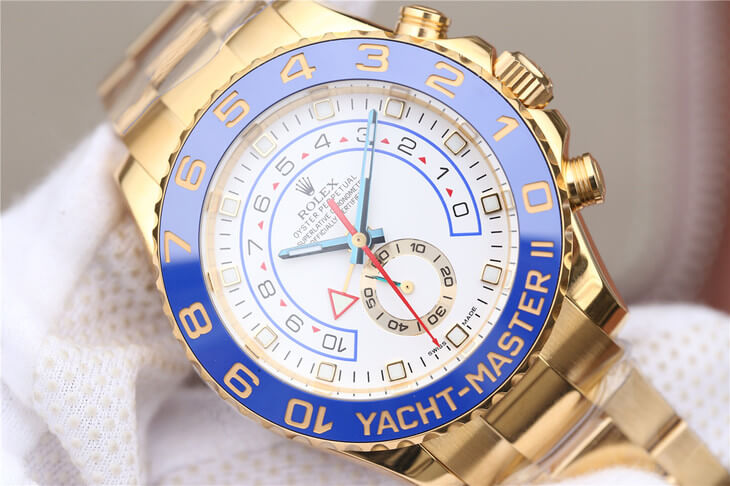
The First Explorer II: Ref. 1655 (1971 – 1984)
The first version of the Explorer II, the reference 1655, made its debut in stainless steel and carried the signature Rolex durability. Unlike GMT replica watches, this model did not feature an independently adjustable 24-hour hand. Instead, the additional orange hand followed the 24-hour scale on the fixed bezel. This limitation made it more of a specialized day/night indicator than a true GMT function, but it served its purpose in low-light environments.
The watch gained fame not for its technical prowess but through marketing, as it was often dubbed the “Steve McQueen watch,” despite the actor never wearing one. Rolex cleverly capitalized on McQueen’s image to boost sales, even though he was known for sporting a TAG Heuer Monaco.
Functionally, the Explorer II featured a unique design, including a matte black dial with stick hands, an oversized inverted triangle at 12 o’clock, and lumed indices at 6 and 9 o’clock. While these features may seem unusual, they were in line with the tool watch ethos Rolex was aiming for. With a larger 39mm Oyster case, water resistance to 100 meters, and an acrylic crystal, the 1655 was well-suited for rough environments like caves, where durability was paramount.
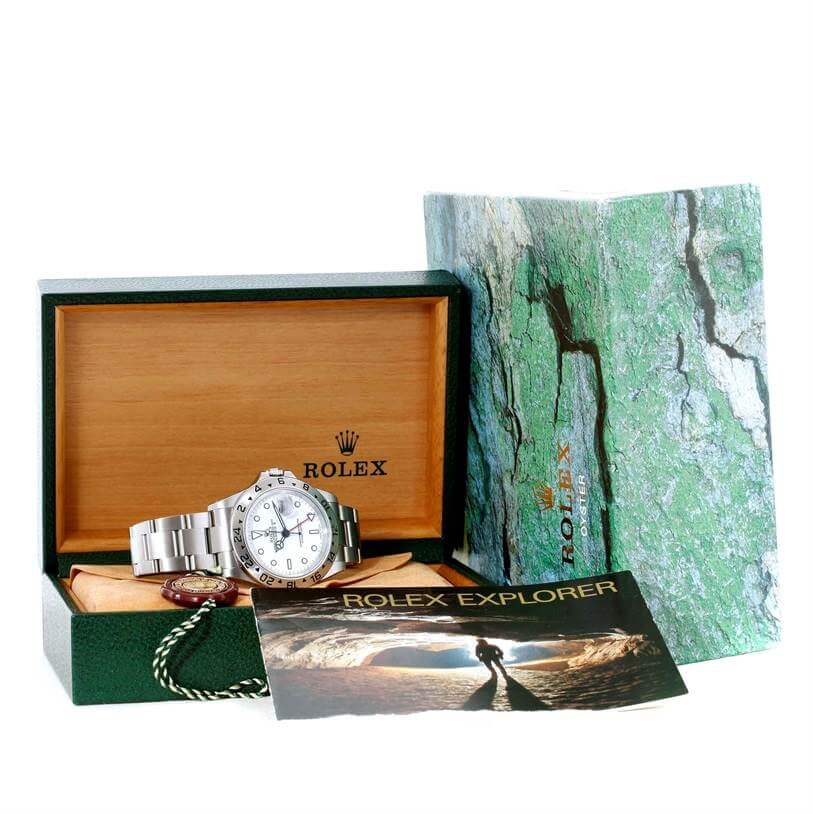
The watch used the Calibre 1575 automatic movement, a COSC-certified chronometer shared with the GMT Master. However, early models sometimes had incorrect movement stamps – a quirky relic from the 1970s. The 1575 offered a reliable 48-hour power reserve and was built to endure, much like the watch itself.
The Ref. 16550: A Shift Toward True GMT Functionality (1985 – 1988)
In 1985, Rolex introduced the reference 16550, a significant step forward in the Explorer II’s evolution. This model featured a true GMT function, allowing the 24-hour hand to be set independently, transforming the Explorer II into a legitimate dual-time zone fake watch. The fixed bezel remained, limiting it to tracking only one additional time zone – unlike the GMT Master, which could track two.
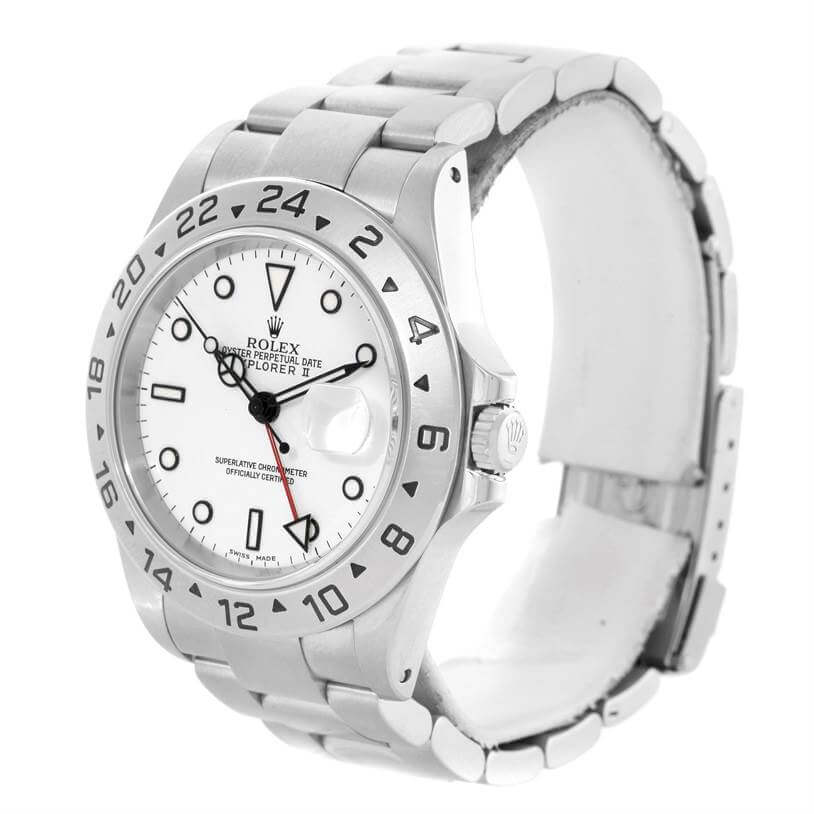
The case size grew to 40mm, and the acrylic crystal was replaced with sapphire for better durability. The 16550 also saw the introduction of Mercedes hands, replacing the straight hands of the 1655, and an optional white (Polar) dial. The GMT hand was redesigned with a slender red stem, subtly referencing the original design while offering a more refined look.
Internally, the 16550 was powered by the Calibre 3085, the first Rolex movement to feature an independently adjustable GMT hand. With a higher beat rate and 48-hour power reserve, this movement set the stage for future innovations. The 16550 remained in production for a brief period but laid the foundation for the Explorer II’s continued success.
The Ref. 16570: Refining the Classic (1989 – 2010)
The 16570, produced from 1989 to 2010, brought minimal visual changes but significant improvements in movement technology. The Calibre 3185 replaced the previous 3085, offering increased jewel count and improved performance. By the mid-1990s, Rolex began using LumiNova in place of tritium for better luminosity. Additionally, the white dial (Polar) versions saw updates, including black outlines around the applied indices and hands, improving legibility.
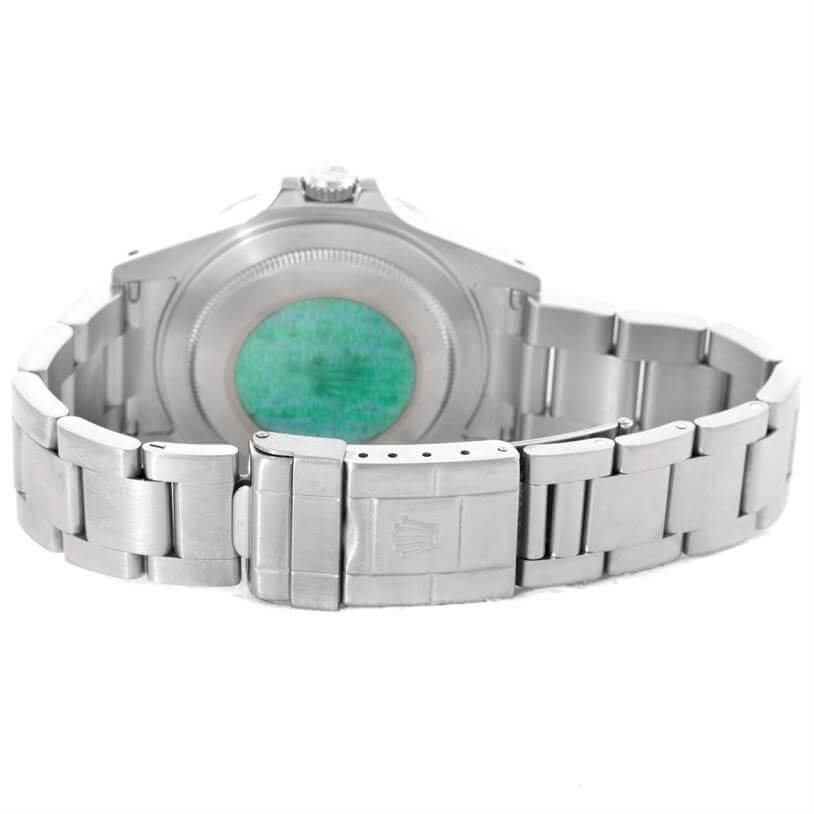
Late models of the 16570 included several key updates, including the engraved “ROLEX ROLEX ROLEX” rehaut to combat counterfeiting, and a shift from “holes” cases to “no holes” cases, which involved changes to how the bracelet was attached to the case.
The 16570 maintained the Explorer II’s iconic design, with the 40mm case and distinctive orange 24-hour hand, making it one of the most beloved iterations for collectors. The movement continued to improve, with the introduction of the Calibre 3186 in the mid-2000s, offering enhanced shock resistance and a power reserve of 50 hours.
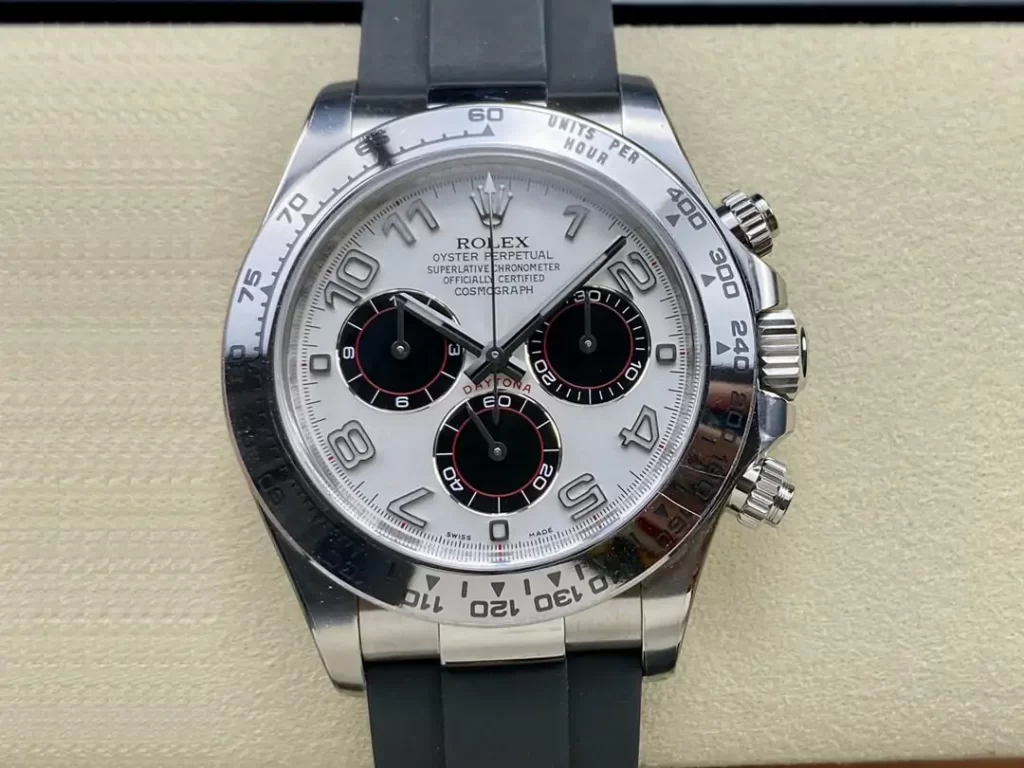
The Ref. 216570: A New Era (2011 – 2021)
The release of the 216570 in 2011 marked a significant shift for the Explorer II. The case grew to 42mm, and the orange GMT hand from the original 1971 design made a triumphant return. This model featured the “Maxi” dial, with larger hands and indices, enhancing readability and matching the larger case size.
The 216570 also introduced Super-LumiNova lume, offering superior brightness compared to its predecessors, and the updated Calibre 3187, which included Paraflex shock absorbers. These changes further cemented the replica Rolex Explorer II’s reputation as a rugged yet refined watch. The rehaut continued to feature the repeating “ROLEX” engraving, maintaining Rolex’s commitment to anti-counterfeiting measures.
The Ref. 226570: Celebrating 50 Years of Adventure (2021 – Present)
The most recent iteration, the 226570, celebrates the 50th anniversary of the Explorer II with subtle design changes and a new movement. While the case diameter remains at 42mm, it has been slightly slimmed, and the lugs are narrower for a more refined appearance. The white dial features matte black indices and hands, offering a modern twist on the classic design.
Internally, the 226570 is powered by the Calibre 3285, a movement featuring Rolex’s innovative Chronergy escapement. This improved efficiency by around 15%, resulting in a power reserve of over 70 hours. The Calibre 3285 also boasts an accuracy of +2/-2 seconds per day, setting a new standard for precision.
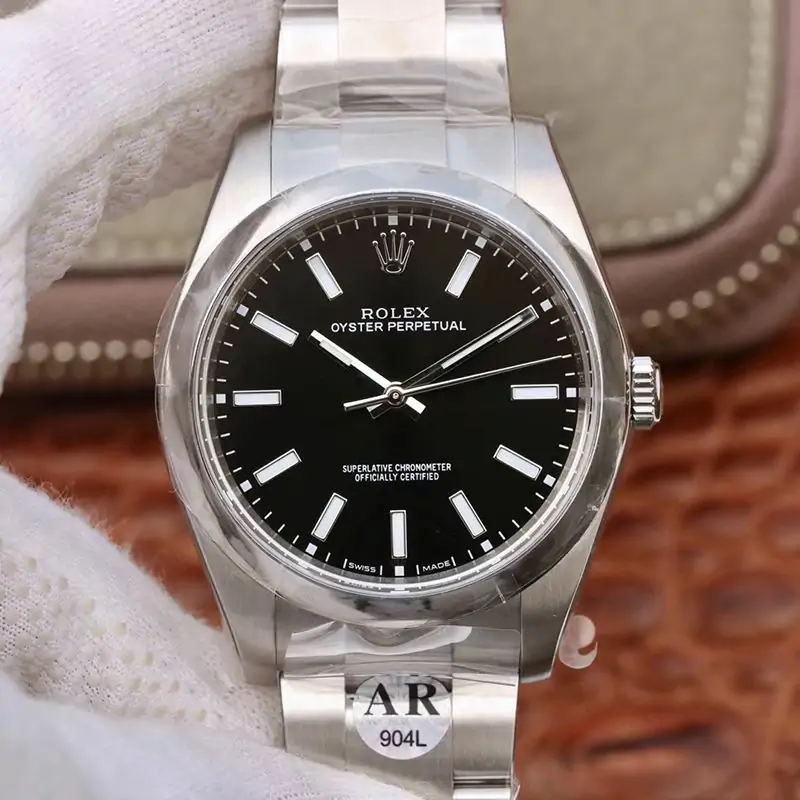
The 226570 also features an upgraded Oyster bracelet with the latest Oysterlock folding clasp and Easylink extension system, making it both durable and convenient for the wearer.
The Legacy and Appeal of the Explorer II
While the Explorer II may not have the same historical legacy as the original Explorer, it has a rich 50-year history of its own. Collectors highly prize early models like the 1655 for their rarity, while later models like the 16550 and 16570 offer significant improvements in functionality and movement performance. The 216570 and 226570 represent the pinnacle of the Explorer II’s design and functionality, balancing modern aesthetics with the watch’s storied history.
The Rolex Explorer II remains a symbol of durability, adventure, and precision, continuously evolving to meet the demands of its wearers. Whether for collectors or those who appreciate a reliable tool watch, the Explorer II continues to be a prized possession, cementing its place in Rolex’s legendary lineup.
